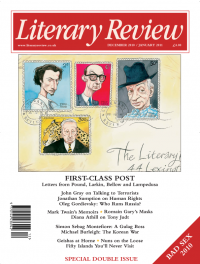Lesley Downer
Flower & Willow
Butterfly’s Sisters: The Geisha in Western Culture
By Yoko Kawaguchi
Whenever I lecture on the geishas, I explain that the word means ‘artiste’ and that geishas undergo a rigorous five-year training in classical Japanese dance and music, akin to that needed to become an opera singer or join the Bolshoi Ballet. But no matter how often I repeat that geishas are independent, empowered women, sooner or later someone will stand up and ask, ‘But are they prostitutes?’ The fantasy that geishas are ‘submissive’ (a favourite word) women trained in the arts of pleasing men is one that Westerners will not readily relinquish. It is a fantasy mightily reinforced by Puccini’s opera Madame Butterfly, in which just such a woman kills herself for love of a Western man.
Ever since they first went east, Westerners have been convinced that Asian women are of deliciously dubious morality, a quality embodied above all in the concept of the geisha. Yoko Kawaguchi, a Japanese woman who grew up in North America, is in the perfect position to explore Eastern

Sign Up to our newsletter
Receive free articles, highlights from the archive, news, details of prizes, and much more.@Lit_Review
Follow Literary Review on Twitter
Twitter Feed
Richard Flanagan's Question 7 is this year's winner of the @BGPrize.
In her review from our June issue, @rosalyster delves into Tasmania, nuclear physics, romance and Chekhov.
Rosa Lyster - Kiss of Death
Rosa Lyster: Kiss of Death - Question 7 by Richard Flanagan
literaryreview.co.uk
‘At times, Orbital feels almost like a long poem.’
@sam3reynolds on Samantha Harvey’s Orbital, the winner of this year’s @TheBookerPrizes
Sam Reynolds - Islands in the Sky
Sam Reynolds: Islands in the Sky - Orbital by Samantha Harvey
literaryreview.co.uk
Nick Harkaway, John le Carré's son, has gone back to the 1960s with a new novel featuring his father's anti-hero, George Smiley.
But is this the missing link in le Carré’s oeuvre, asks @ddguttenplan, or is there something awry?
D D Guttenplan - Smiley Redux
D D Guttenplan: Smiley Redux - Karla’s Choice by Nick Harkaway
literaryreview.co.uk